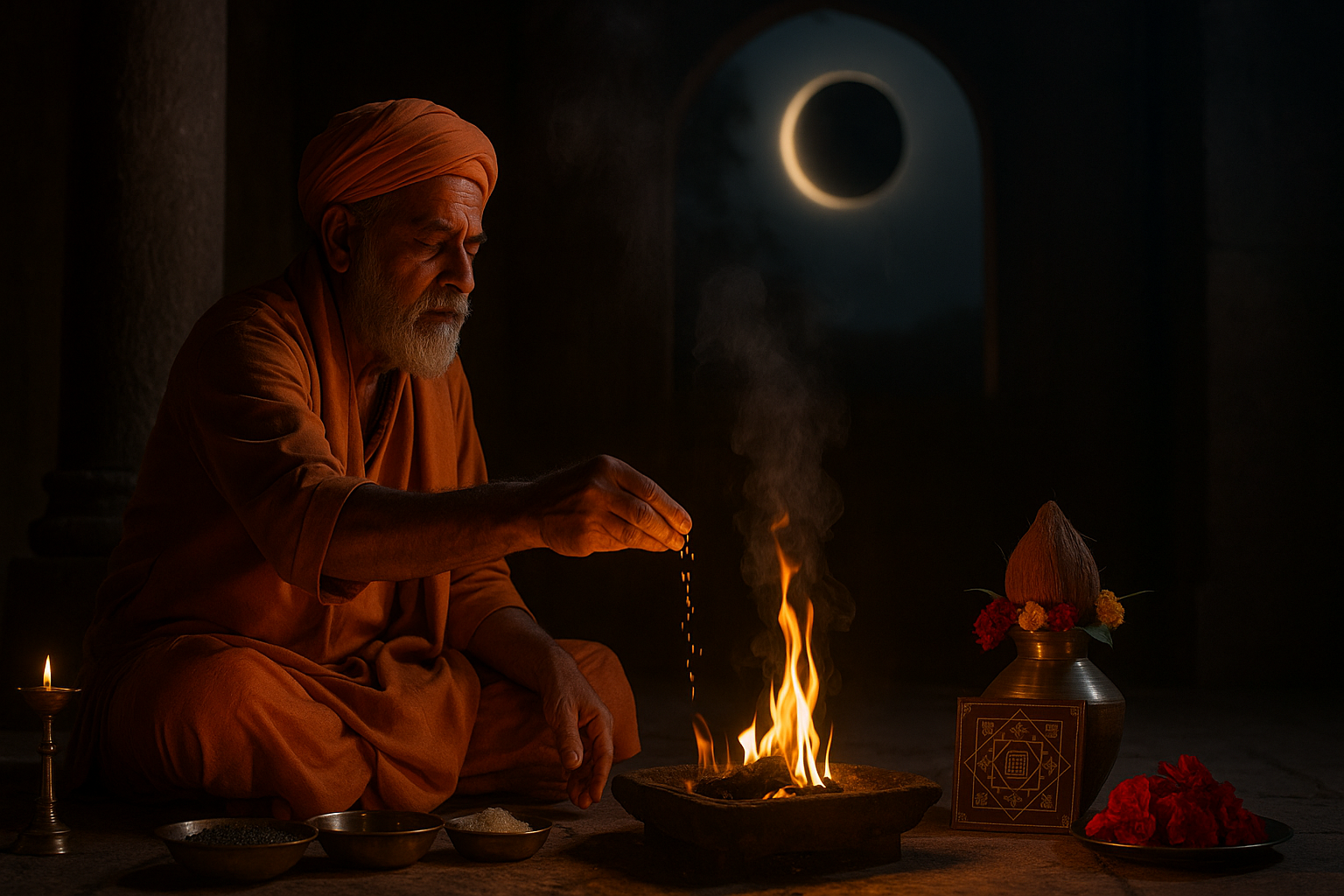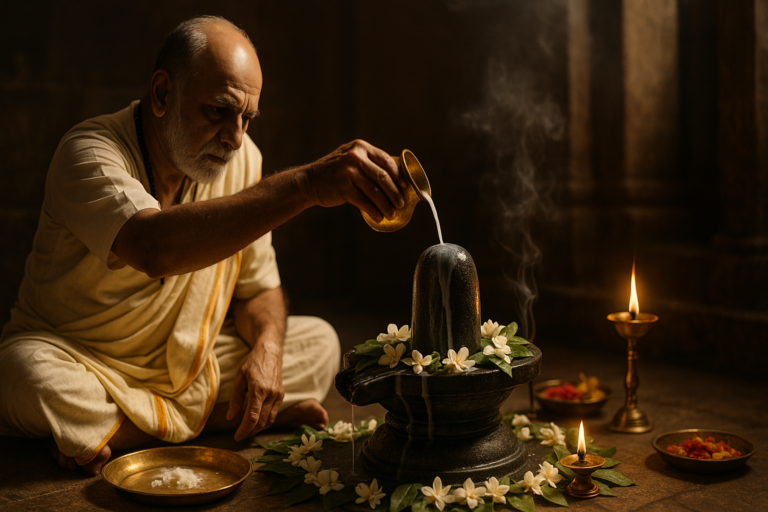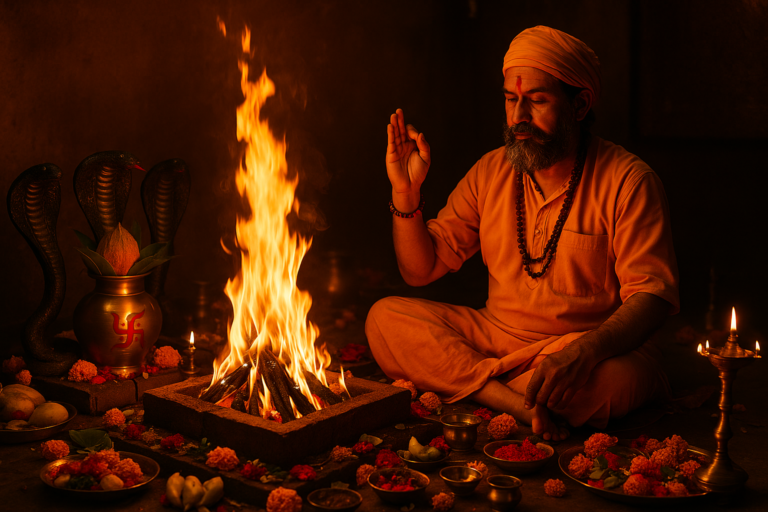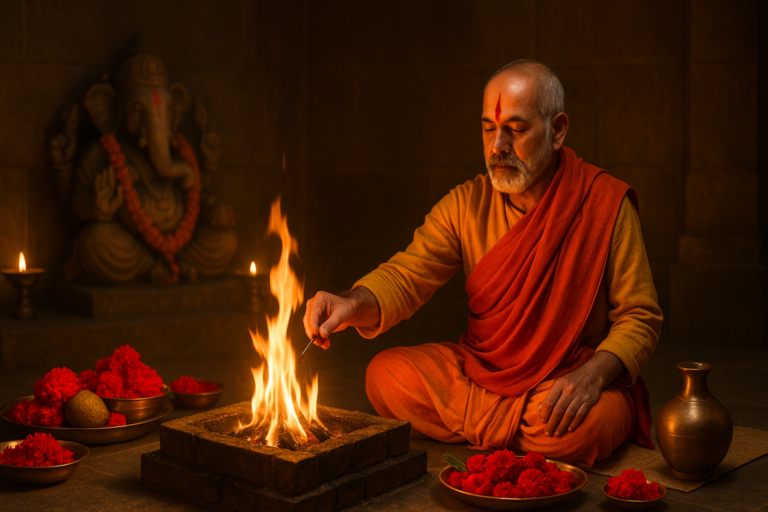Grahan Dosh (eclipse affliction) arises when a person’s birth chart or current planetary transits are adversely affected by the influence of Rāhu and Ketu, especially around the time of a solar or lunar eclipse. In Vedic astrology, eclipses are seen as moments when the normal flow of cosmic energies is disrupted, potentially creating obstacles in health, wealth, relationships, and mental peace.
1. When & Why Grahan Dosh Occurs
- Birth During Eclipse
- If an individual is born exactly during a solar or lunar eclipse, their chart carries a permanent Grahan Dosh.
- Transits Near Eclipse Points
- When major planets (Sun, Moon, Mars, etc.) transit too close to Rāhu/Ketu or eclipse degrees in your chart, temporary doshas can form.
- Effects
- Sudden setbacks, inexplicable delays, health issues (especially eye or neurological problems), emotional turbulence, and karmic blockages.
2. Purpose of Grahan Dosh Puja
- Pacify the Nodes
- Rāhu and Ketu are the mythic “eclipse serpents.” Through mantra and offerings, we seek to soothe their disruptive energy.
- Restore Energetic Balance
- Counteract the eclipse’s “shadow” effect so other planetary forces can function harmoniously.
- Karmic Cleansing
- Burn away residual eclipse-related karmas that manifest as blockages in personal or professional life.
3. Typical Ritual Outline
- Purification (Shuddhi)
- Devotee takes a cleansing bath (often in Ganga water) and dons fresh clothes, preferably white or light grey.
- Kalash Sthāpana
- A sacred pot (kalash) filled with holy water and adorned with red or black cloth symbolizes Rāhu and Ketu.
- Invocation (Avahana)
- Chanting of Rāhu Beej Mantra (“ॐ भ्रां भ्रीम भ्रौं सः राहवे नमः”) and Ketu Beej Mantra (“ॐ स्रां स्रीं स्रौं सः केतवे नमः”) to call in and then pacify the nodes.
- Homa (Fire Ritual)
- Offerings of sesame seeds (til), mustard oil, ghee, and red flowers into the sacred fire while reciting Grahan Shanti Mantras.
- Yantra Installation
- Placement of a Rāhu-Ketu yantra beneath the Kalash or in the puja samagri tray, energized by mantras.
- Pradakṣiṇa & Aarti
- Circumambulation of the fire/Kalash, followed by waving of lamps and distribution of prasadam (blessed sweets).
4. Best Timing & Venue
- Optimal Days:
- During an Eclipse (solar/lunar) for maximum remedial power.
- Amāvāsya (new-moon) or on Rāhu/Ketu-ruled weekdays (Wednesday/Thursday evenings).
- Venues:
- Riversides or temple ghats (e.g., Ujjain’s Mahakal ghat) hold extra potency for eclipse rites.
- In-temple ceremonies under a qualified Vedic priest like Pandit Girdhari Guru Ji in Ujjain.
5. Expected Benefits
- Reduced Panic & Anxiety around eclipses or major life changes
- Alleviation of Health Ailments linked to nervous system or chronic conditions
- Stabilized Finances & Career by removing sudden blocks and delays
- Harmonious Relationships, especially resolving unexplained disputes
- Enhanced Spiritual Resilience, making meditation and mantra practice more effective




